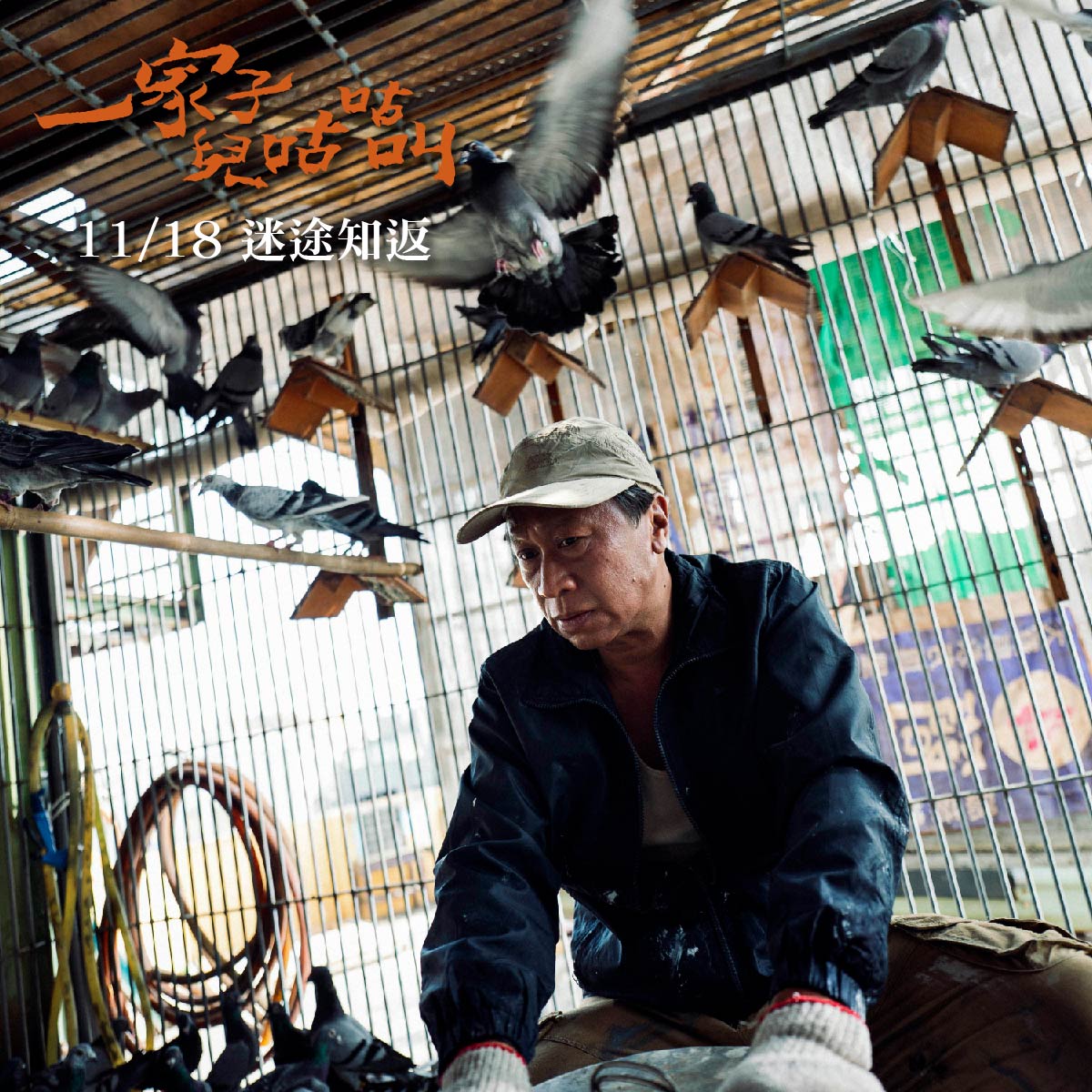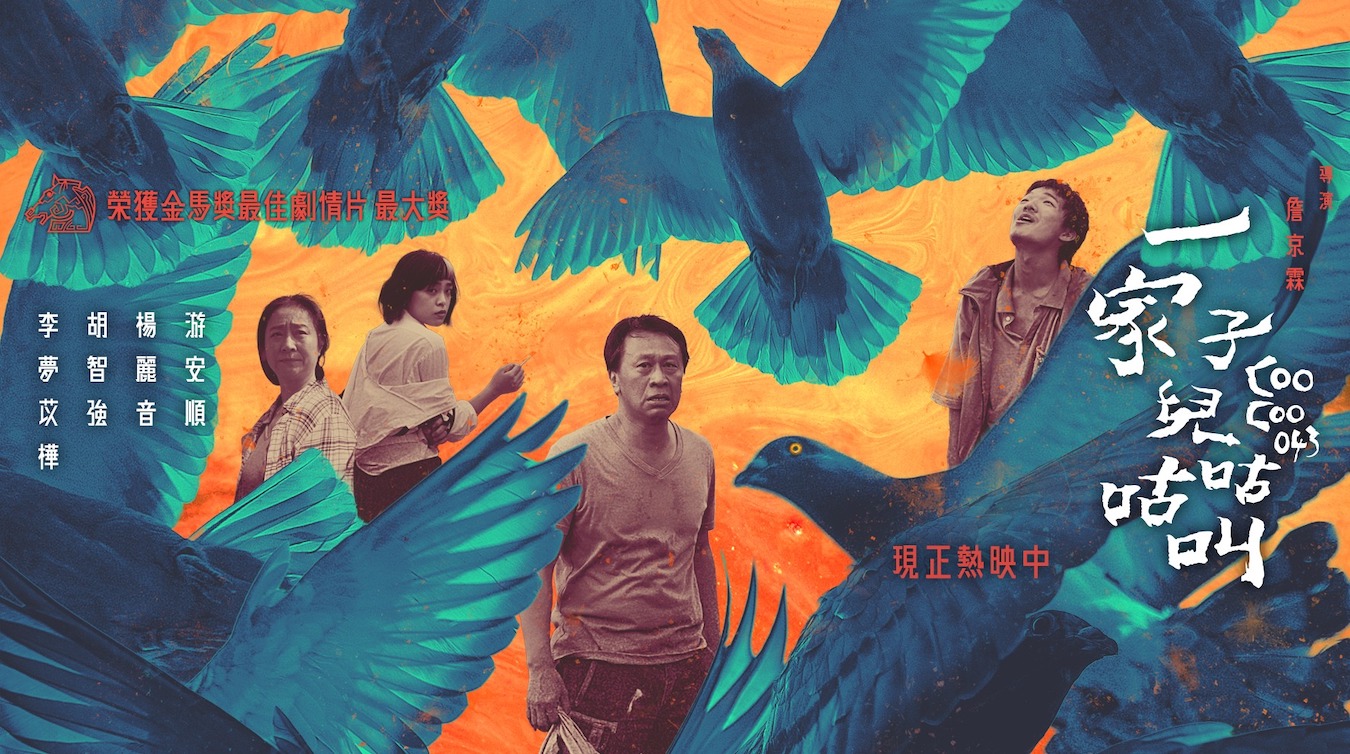by Brian Hioe
語言:
English
Photo Credit: Film Poster
THE RATHER INSCRUTABLY titled Coo-Coo 043 ( 一家子兒咕咕叫) proves a dramatic look at the lives of Taiwan’s working class, through the lens of pigeon racing. Though a bit overwrought at times, it is an effective work.
Pigeon racing along Taiwan’s eastern coast has proved a popular gambling sport, though it often runs afoul of the law–gambling is illegal in Taiwan. Likewise, prize pigeons are sometimes kidnapped by gangsters demanding ransoms from their owners, with owners placing great stock on the pedigrees of their prize pigeons.

Photo credit: 一家子兒咕咕叫/Facebook
“Coo-Coo”, then, refers to the sound that pigeons make. The plot begins with the sudden return of protagonist Ching’s prize pigeon, “043”, after disappearing during a race seven years earlier.
But while “043”’s return sets its plot into motion, the film focuses primarily on Ching’s relationship with his family. “043” disappeared around the same time that Ah-Ching’s son Xiao-Shih did seven years earlier, provoking reflection on the past from Ching, his wife Ming, and daughter Lulu.
Ching blames Ming for Xiao-Shih’s disappearance, taking out his anger on her through verbal and physical abuse. Namely, the day of the disappearance, Ming did not drive Xiao-Shih to school, as she usually did. Yet, this was due to Ching being preoccupied with his pigeons after a series of losses. In the meantime, Lulu deals with the malaise of her rural environment and forms a relationship with a rough young man, Tiger, who helps Ching train his pigeons but is also involved in gang-related pigeon kidnapping.
As an ensemble act, Coo-Coo 043 does a good job balancing the different members of its cast. Although the story begins by focusing on Ching, who is clearly the protagonist, it eventually widens its scope to address the perspectives of female characters such as Ming and Lulu. In particular, Ching’s abusive treatment of Ming causes him to be a highly unsympathetic character at times, which is dramatically highlighted near the film’s conclusion. But the film is quite successful in balancing both perspectives in its depiction of the failing marriage between the couple, as well as between Ching and his daughter.
The film also comes to flesh out Tiger’s perspective over time, and Tiger emerges as a well-realized character—even if Lulu’s characterization remains a bit sparse and the movie eventually decides not to focus on her as a character. Yet, either way, their depiction comes off as too overly dramatic and lacking in social realism.
Coo-Coo 043 also comes up short with its depiction of life among working-class Taiwanese. Too often does the film draw on outdated stereotypes about working-class benshengren Taiwanese, who are descended from previous waves of Han migration before the KMT came to Taiwan, following its defeat in the Chinese Civil War. Tiger and his friends are initially depicted as violent hillbilly hooligans, constantly high on betel nut, and prone to randomly killing pigeons for their amusement–embodying the “taike” stereotype. So, too, do depictions of Lulu’s promiscuous sexuality conform to the “taike” stereotype, even though Lulu is supposed to be just a high school student in the movie.
The film also depicts Ching’s family as engaging in a veritable grab bag of disreputable working-class professions—pigeon gamblers, funeral performers, nightclub dancers, gangsters, and crane claw store operators. This doesn’t just stereotype working class benshengren Taiwanese, but it also makes the movie less focused; Coo Coo 043 could’ve just focused on pigeon racing alone and done better.

Photo credit: 一家子兒咕咕叫/Facebook
On a technical front, Coo-Coo 043 also manages well enough. Some shots showing various aspects of pigeon racing stand out. A jarring party scene early on showing Tiger, Lulu, and their friends dancing to schlocky taike techno originally comes off as tonally dissonant, but introduces elements used to great effect later on in the film.
The film’s setting, showing the ramshackle houses lived in by Ming and his family, or used for raising pigeons by the characters, serves to drive home their rural poverty. This, too, is another accomplishment of the film. But the movie is less successful in its depiction of urban environments, in which efforts to drive home the disparity in wealth between rural and urban environments come off as a bit cartoonish.
Even so, Coo-Coo 043 is, on the whole, one of the better depictions of Taiwan’s rural poor in recent memory. But the film probably still leaves much to be desired compared to earlier films in the same vein, such as Dust of Angels, or the films of Hou Hsiao-hsien. The strange title may have, however, sunk all hopes of international marketability for the film.



